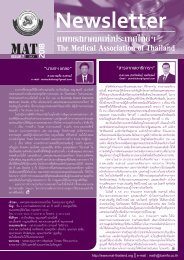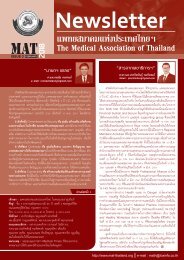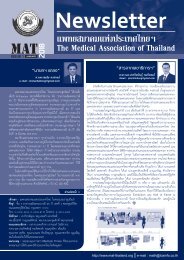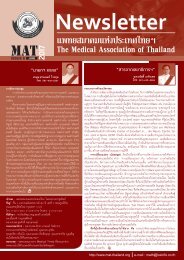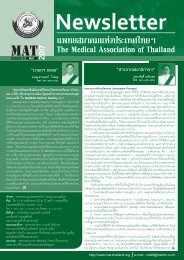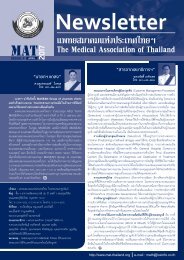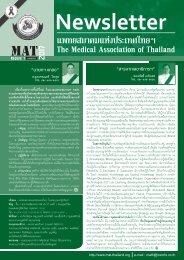risk factor for preeclampsia
You also want an ePaper? Increase the reach of your titles
YUMPU automatically turns print PDFs into web optimized ePapers that Google loves.
Pre-Eclampsia Risk Factors and Adverse Outcomes<br />
Figure 1. Pre-eclampsia prevalence per facility by country and region. Plot showing prevalence of pre-eclampsia per facility by country and<br />
region (Africa, Asia and Latin America).<br />
doi:10.1371/journal.pone.0091198.g001<br />
For adverse maternal and perinatal outcomes, overall prevalences<br />
were less than 335 (1%) <strong>for</strong> maternal death, 7,404 (3%) <strong>for</strong><br />
perinatal death, 27,611 (10%) <strong>for</strong> preterm birth and 27,348 (10%)<br />
<strong>for</strong> low birthweight. Prevalences of the adverse outcomes by region<br />
and country are given in Table 2. Table 4 provides the adjusted<br />
odds-ratios <strong>for</strong> adverse maternal and perinatal outcomes obtained<br />
via multi-level logistic regression analyses. Random effects <strong>for</strong> the<br />
institutional and country levels in each model were shown to be<br />
significant from likelihood-ratio tests. For maternal death (AOR:<br />
4.48; 95%CI 2.99–6.69) and perinatal death (AOR: 1.87; 95%CI<br />
1.66–2.11), preterm birth (AOR: 2.86; 95%CI 2.68–3.06) and low<br />
birthiweight (AOR: 2.32; 95%CI 2.16–2.50), pre-eclampsia/<br />
eclampsia was found to be a significant <strong>risk</strong> <strong>factor</strong>. Similar<br />
findings were obtained from the sensitivity analyses.<br />
Discussion<br />
To the authors’ knowledge, this is the first multi-level, multicountry<br />
analyses dealing with pre-eclampsia/eclampsia <strong>risk</strong> <strong>factor</strong>s<br />
and its adverse outcomes including maternal deaths focusing on<br />
developing settings. Also among the strengths of this study are the<br />
large sample size and the application of standardized questionnaires<br />
across facilities, countries and regions. The prevalences of<br />
pre-eclampsia/eclampsia in the study population showed considerable<br />
variation at both the country and facility levels. At the<br />
individual level, a history of chronic hypertension, a BMI $35 kg/<br />
m 2 , and severe anemia significantly increased the <strong>risk</strong> of <strong>preeclampsia</strong>/eclampsia<br />
by three times or more. Other significant<br />
higher maternal <strong>risk</strong> <strong>factor</strong>s (twice the odds or greater) included<br />
having cardiac or renal disease, having diabetes, being nulliparous<br />
and being $30 years of age. Mothers diagnosed with <strong>preeclampsia</strong>/eclampsia<br />
were found to be significantly at four times<br />
the <strong>risk</strong> of maternal death than mothers who did not have <strong>preeclampsia</strong>/eclampsia.<br />
Our analysis found that protective <strong>factor</strong>s<br />
<strong>for</strong> <strong>preeclampsia</strong>/eclampsia included .8 antenatal care visits<br />
compared with 4–8 visits. The MMR was found to be significantly<br />
associated with pre-eclampsia/eclampsia <strong>risk</strong> <strong>factor</strong>s. The condition<br />
was also shown to have a higher <strong>risk</strong> <strong>for</strong> perinatal death,<br />
preterm birth and low birth weight. These findings support<br />
previous research [3,4].<br />
The variation of pre-eclampsia/eclampsia prevalences is perhaps<br />
not only reflective of the variability in maternal <strong>risk</strong>-<strong>factor</strong><br />
distribution, but may also be attributed to differences in facility<br />
and country characteristics, such as diagnostic capacities or<br />
accessibility of services. While the facility’s referral level is also a<br />
<strong>factor</strong>, considerable variability was still observed even after<br />
stratification on this variable. The above observations are<br />
supported by findings that GNI per capita are significant <strong>preeclampsia</strong>/eclampsia<br />
<strong>risk</strong> <strong>factor</strong>s. This may be explained by<br />
countries with lower GNI per capita having less diagnostic<br />
capabilities to identify pre-eclampsia/eclampsia cases. Lower GNI<br />
per capita may also be reflective of socioeconomic <strong>factor</strong>s<br />
associated with poor access to healthcare services. These findings<br />
suggest probable underestimation of pre-eclampsia/eclampsia<br />
prevalences in low-resource settings as well as failure to identify<br />
high-<strong>risk</strong> pregnant women <strong>for</strong> proper management, potentially<br />
PLOS ONE | www.plosone.org 6 March 2014 | Volume 9 | Issue 3 | e91198




